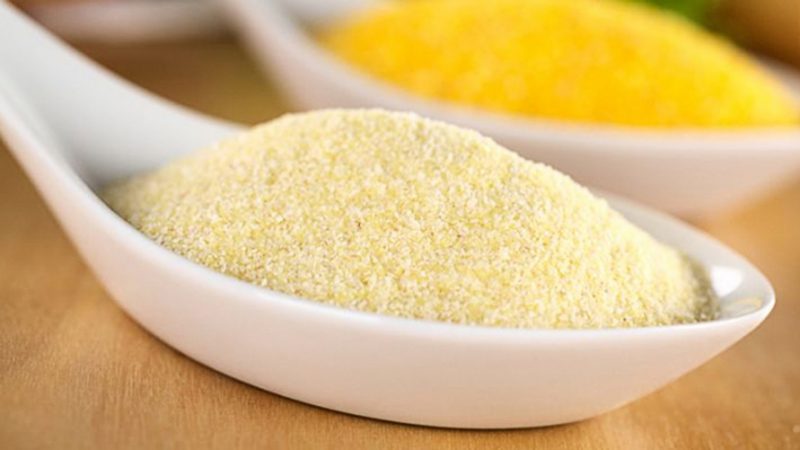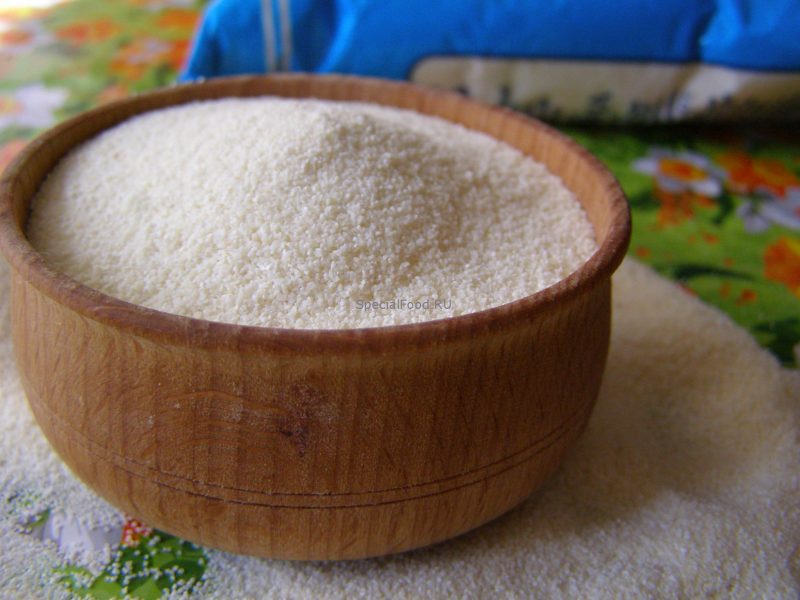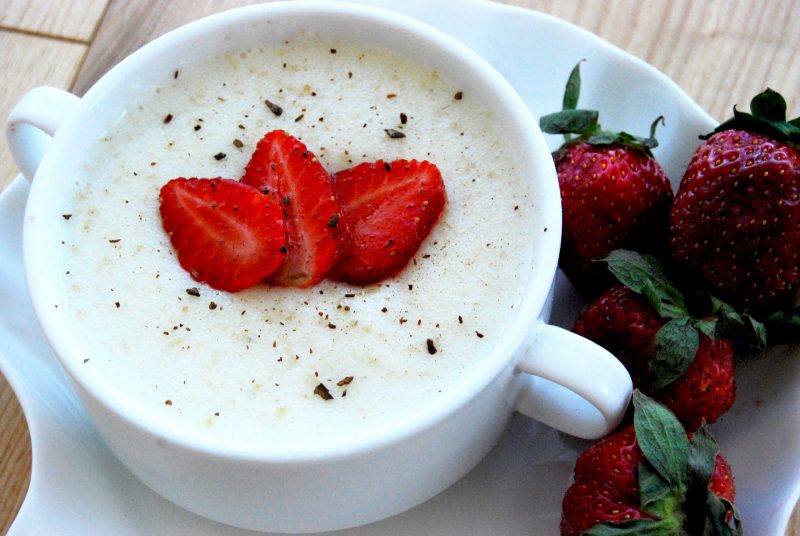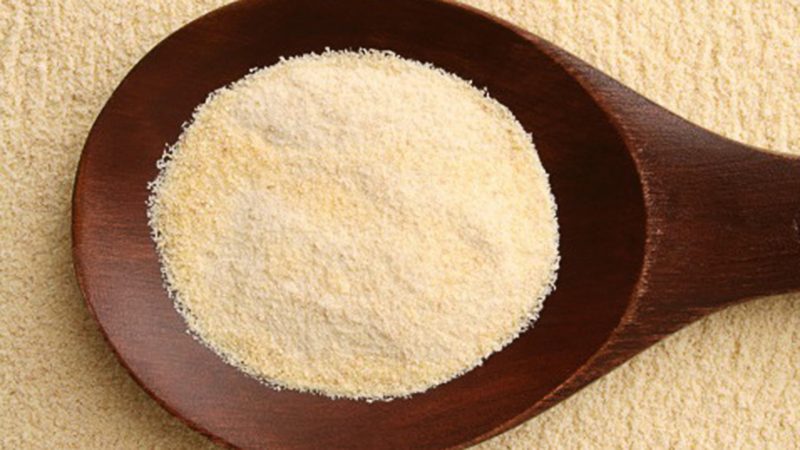Manka is one of the most popular cereals and it is especially often fed by children in the kindergarten. But despite the prevalence of the dish, many do not know at all what semolina is made of. Let's deal with this in more detail.
Material Content:
What cereals are made from and how are semolina made?
You are still tormented by the question, what is semolina made of? Of course, from wheat! After collection, it goes through several processing steps.before we get to the state in which we are used to seeing the cereals being discussed.

- First of all, the selected grain is checked for gluten content using a special laboratory analysis.
- After checking the grains are sent to the workshop, where the tempering process is carried out, which gives the cereals density. They are immediately cleaned and washed.
- Next, you need to free the core from the layers covering it. This is done through coarse grinding.
- The resulting mass is sieved, ground by machines and processed.
- At the last stage, the cereal is separated from the shell, ground and quality control is carried out.
A good, really high-quality product should be snow-white. Of course, semolina can be either yellow or cream - the color depends on the type of grain.
Composition and calorie content
So, having figured out what cereal semolina is, it's time to find out its properties and composition. In the process of grinding the cereal loses a certain percentage of fat and fiber. By the way, just the low fiber content contributes to easy digestion of porridge, and in addition, starch relieves the stomach of mucus. Also, many useful substances are stored in semolina: zinc, potassium, phosphorus, iron and vitamins (E, PP, B).

Nutrients:
- proteins - 10.5 grams;
- fats - 1 gram;
- and carbohydrates - 70 grams.
In addition to its rich composition, semolina is generous in calories - 328 units per 100 grams of dry product. But after cooking, this number drops to only 100 calories per 100 grams. Nevertheless, it is not worth abusing such porridge. One small portion for breakfast is enough, and not every day.
The benefits of semolina for men, women
First of all, this porridge is ideal for those who have stomach problems. This is due to the low fiber content and easy digestibility.

But besides this, the use of semolina has other positive aspects:
- the cereal contains thiamine, which is not produced by our body, which means it must come with food;
- for blood health, a person needs folic acid, it can also be obtained, sometimes using semolina;
- a large amount of iron in the composition of the cereal makes up for its deficiency in human blood.
As for the benefits of cereals for men, first of all, it is a simple and quick saturation of the body. That is, having breakfast with this porridge, you can not think about hunger until lunch. It is recommended for those who are actively involved in sports and want to gain muscle mass, because it is high-calorie and contains a sufficient amount of protein.
A semolina prepared in milk, and even with sugar, will be an excellent remedy for fatigue and nervous tension for men engaged in physical labor.
For women, semolina is recommended for weight loss, but of course, portions should be small. Some people think that oatmeal will be more effective, but it’s not so - it is much harder to digest and this is especially true if there are digestive problems.
Regular use of porridge has a positive effect on the condition of the skin and hair due to many trace elements. And, of course, some women actively use cereals for various cosmetic purposes.
Useful properties for children and during pregnancy
It is not in vain that semolina is given to children in almost all kindergartens, this indicates its necessity and benefits for the growing organism.

- A large number of vitamins and minerals have a beneficial effect. Calcium and silicon strengthen bones, while magnesium and potassium strengthen the cardiovascular system.
- It is recommended to eat porridge with renal failure.
- Used for depletion due to the small amount of fiber.
- Carbohydrates saturate and energize well.
During pregnancy, this porridge is not recommended for regular use.
But sometimes it turns out that this is one of the few products from which a woman is not sick and therefore has to be included in the diet.
The use of semolina
Usually breakfast semolina, but there are several more areas where it can be used with benefit.
For weight loss

This porridge is perfect for losing weight to people with stomach problems and slagging of the body. It can also be used as the main component of a mono-diet (diet, where only one product is used). Manka for breakfast will improve digestion several times a week, which will also positively affect the rate of weight loss.
Face masks
Some face masks from semolina can replace expensive creams.

Its regular use for cosmetic purposes:
- help tighten the skin;
- relieve acne and spots;
- removes dryness;
- make the skin softer;
- protect against ultraviolet rays
- and start the natural regeneration processes.
In cooking
If you think that semolina can only be cooked, then you are mistaken. It is used to make dough, casseroles and fritters.And also as a breading for cutlets, meatballs and zraz. It can be used to make a very popular cake - mannik, and it’s good to add such cereal to mousse, souffle and puddings.

Most importantly, remember that when interacting with other products, the cereal swells and increases, so be sure to consider the proportions of the components when using semolina in the recipe.
Contraindications and possible harm
It would seem that bad can be from ordinary porridge?

But in fact, this cereal should be used with caution:
- phytin and gliodin, which are part of the cereal, can disrupt the absorption of beneficial substances in the body;
- some people may have gluten intolerance, but it, of course, is in decoy;
- it is undesirable to give porridge to children up to one year, since there is a lot of starch in the cereal;
- excessive consumption of the product can contribute to weight gain.
Like any other product, semolina has positive and negative properties. It is enough to observe the measure and then there will be no harm from its use. On the contrary! There will only be benefits that you will definitely appreciate by including a plate of semolina in your weekly diet.












